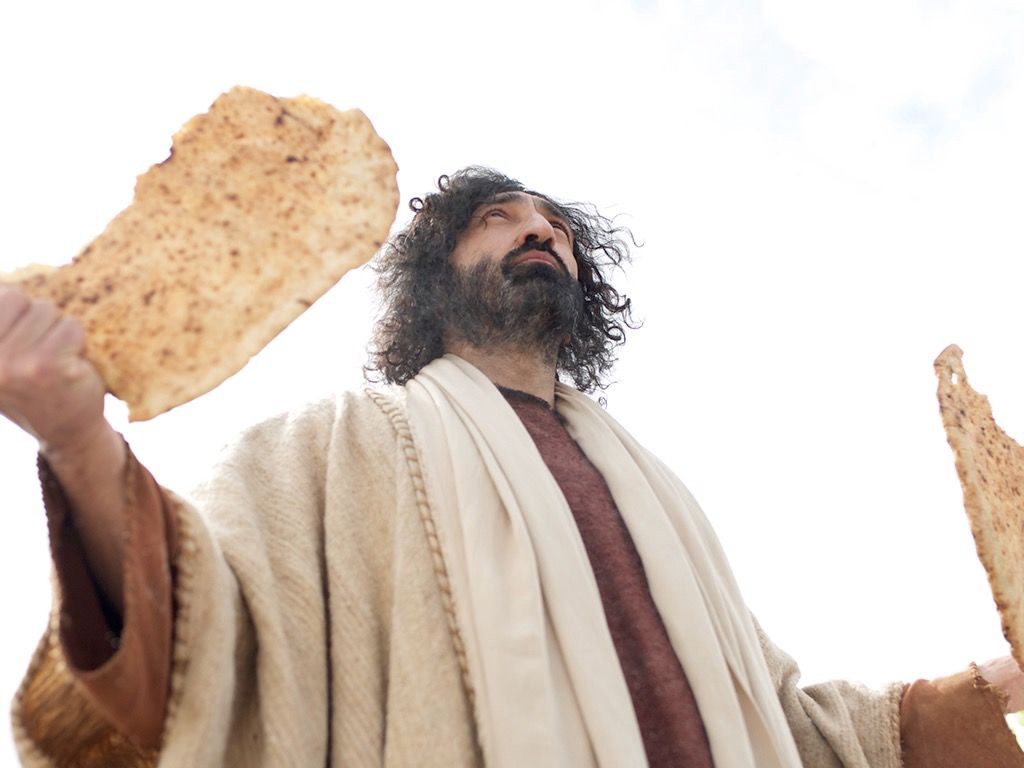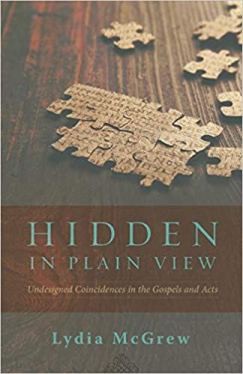 Photo by Ryoji Iwata on Unsplash
Photo by Ryoji Iwata on Unsplash
The feeding of the 5000 is one of Jesus? most popular miracles. If you grew up in church, you probably saw it depicted on many a flannel graph. You know the story: Jesus was in a deserted place where large crowds were hanging on his every word. When it started to get late, Jesus? disciples asked him to disperse the gathering to the surrounding villages so they could grab a bite to eat. Rather than sending them home, Jesus took five loaves and two fish and fed the multitude. The young lad who shared his food became famous that day and was sent home with 12 baskets full of leftovers.
Critics of the Bible tend to laugh at this miracle story. It sounds like a pious fiction meant only to teach that God can do a lot even when given very little. Or maybe it?s meant to make Jesus look like another Moses. Just as the children of Israel were fed with manna and quail from heaven under Moses, so Jesus miraculously provides a big crowd some Filet-O-Fish sandwiches. But what if I told you that this story has some real evidential basis? No, seriously. Hear me out for a sec.
The evidence for the feeding of the 5000 comes in the form of some internal evidence that goes by the funny name of ?undesigned coincidences?.
WHAT ARE UNDESIGNED COINCIDENCES?
?Undesigned coincidences? is a phrase that was coined by the 19th-century writer JJ Blunt, who wrote a fascinating book on the topic that you can download for free. They?re called ?undesigned? because they?re incidental details that writers left out that raise questions, only to be filled in by another writer in an undesigned way.
Detective J. Warner Wallace is a former-atheist-turned-Christian after looking at the gospels in a similar way he?d investigate crimes. Reading these as a skeptic caught his attention. Here?s how Wallace describes undesigned coincidences:
? When I first read through the Gospels forensically, comparing those places where two or more gospel writers were describing the same event, I was immediately struck by the inadvertent support that each writer provided for the other. The accounts puzzled together just the way one would expect from independent eyewitnesses. When one gospel eyewitness described an event and left out a detail that raised a question, this question was unintentionally answered by another gospel writer (who, by the way, often left out a detail that was provided by the first gospel writer).
This interdependence between the accounts could be explained in one of two ways. It may have been that the writers worked together, writing at precisely the same time and location, to craft a clever lie so subtle that very few people would even notice it at all. The second possibility is that the Gospels were written by different eyewitnesses who witnessed the event and included these unplanned supporting details; they were simply describing something that actually happened.? (Cold Case Christianity, Kindle Location 3156)
With this argument, it?s better seen than explained. The miracle of the feeding of the 5000 appears in all four gospels, and as we go on you?ll see how all four gospel writers leave question-raising details that are filled in by one another in startling fashion in this story. Hang in there and you?ll see what I mean.
 Image from Lumo Project ? FreeBibleImages.org
Image from Lumo Project ? FreeBibleImages.org
UNDESIGNED COINCIDENCES IN THE FEEDING OF THE 5000 ACCOUNTS
Woe to you, Chorazin! Woe to you, Bethsaida! For if the mighty works done in you had been done in Tyre and Sidon, they would have repented long ago in sackcloth and ashes. (Matthew 11.21)
You might think this is an odd place to start. Here Jesus chides Chorazin and Bethsaida for not responding to extraordinary evidence for his divine claims. But what mighty works is he referring to? If you?re just reading his gospel, Matthew hasn?t given us a clue up to this point.
Lifting up his eyes, then, and seeing that a large crowd was coming toward him, Jesus said to Philip, ?Where are we to buy bread, so that these people may eat?? (John 6.5)
So why Philip? In the four gospels, we see Peter normally pictured front and center. Not far behind are James and John. There?s also Judas, the treasurer who might be asked budget questions for such a large run for food. Philip plays a very minor role. To put this piece of the puzzle together, we have to look elsewhere.
On their return the apostles told him all that they had done. And he took them and withdrew apart to a town called Bethsaida. When the crowds learned it, they followed him, and he welcomed them and spoke to them of the kingdom of God and cured those who had need of healing. (Luke 9.10?11)
Luke is the only gospel writer who gives us the location of the feeding of the 5000. Ah, this now explains why Matthew records Jesus? chiding the city for their stubborn unbelief. John doesn?t mention Bethsaida as the location of the miracle. But later John fills us in that Philip was from Bethsaida, which is why Jesus was asking him where they might find bread. Check it out –
So these came to Philip, who was from Bethsaida in Galilee, and asked him, ?Sir, we wish to see Jesus.? (John 12.21)
Are you picking up what I?m laying down now? These little details are filled in by the gospel writers in such an incidental way that you can only learn by paying close attention. Matthew, who often arranges his material by theme rather than in order, tells the story of the feeding of the 5000 in the 14th chapter of his gospel. Only when we compare Luke?s account do we find that the feeding actually took place before Jesus pronounced woes over Bethsaida (Luke 10:13). But wait, there?s even more.
And he said to them, ?Come away by yourselves to a desolate place and rest awhile.? For many were coming and going, and they had no leisure even to eat. (Mark 6.31)
We knew that Jesus had a large crowd, but Mark raises a question as to why so many where coming and going. John fills in the details for why this was –
Now the Passover, the feast of the Jews, was at hand. (John 6.4)
Think about it for a second. In Acts 2 we read about huge crowds of Jews coming from all over the place to celebrate Pentecost. We see this pattern for other feasts, just check out Luke 2:41, John 2:13, 7:1?8, and Acts 20:16. Plus Josephus estimates nearly 3 million people were in Jerusalem for Passover during Nero?s reign. ( Jewish War 6.9.3) So now we see that John fills in the detail about the activity of the crowd. At Passover season the roads would be filled with huge caravans of travelers.

Then he commanded them all to sit down in groups on the green grass. (Mark 6:39)
And John 6:10 said there was much grass. OK, so why am I (and the gospel writers) drawing attention to the grass? Who cares about grass? Here?s Lydia McGrew, who?s written the definitive book on the subject of undesigned coincidences on the significance of the turf:
?Why does Mark specifically mention that the grass was green? It will come as no surprise to a reader who has followed the previous coincidence that I turn at this point again to John 6.4-?(T)he Passover ? was at hand.? Passover, of course, falls in the spring. The grass is not generally green in that region, but it is green in the spring after the winter rains, around the time of Passover. There would have needed to be quite a lot of green grass to make Mark?s statement true, since he implies that more than 5,000 people sat down on it. At that time of year, but not at others, such a quantity of green grass would be possible. So here we have a perfect fit between John?s casual reference to the time of year and Mark?s specification of the detail of the green grass.? (Hidden in Plain View, Kindle location 949)
And just like that, another piece of the puzzle falls into place. All of these little details are fitting together interconnectedly in such a way that defies conspiracy. But hang on, there?s a little bit more:
And you, Capernaum, will you be exalted to heaven? You will be brought down to Hades. For if the mighty works done in you had been done in Sodom, it would have remained until this day. (Matthew 11:23)
Jesus is taking the gloves off here. His audience would have been familiar with Isaiah, they would?ve caught his drift. Jesus was comparing their impending fall to the fall of Lucifer himself.
You said in your heart, ?I will ascend to heaven; above the stars of God I will set my throne on high; I will sit on the mount of assembly in the far reaches of the north; I will ascend above the heights of the clouds; I will make myself like the Most High.? But you are brought down to Sheol, to the far reaches of the pit. (Isaiah 14:12?15)
Ouch. Why so severe? John fills us again with the ?why? behind Jesus? seemingly harsh condemnation. If you remember in John 6, Jesus goes into his sermon about him being the Bread of Life. Whoever eats of his flesh and drinks of his blood will have eternal life. This sermon went over like the proverbial lead balloon, as these Jews thought that Jesus jumped the shark with this weird message that sounded like cannibalism. Rather than trying to grasp the spiritual meaning behind his message, many of his own disciples were quick to ditch him.
Here are a few verses that help us summarize:
So when the crowd saw that Jesus was not there, nor his disciples, they themselves got into the boats and went to Capernaum, seeking Jesus. (John 6:24)
Jesus answered them, ?Truly, truly, I say to you, you are seeking me, not because you saw signs, but because you ate your fill of the loaves. (6:26)
I am the living bread that came down from heaven. If anyone eats of this bread, he will live forever. And the bread that I will give for the life of the world is my flesh.? (6:51)
But Jesus, knowing in himself that his disciples were grumbling about this, said to them, ?Do you take offense at this? Then what if you were to see the Son of Man ascending to where he was before? It is the Spirit who gives life; the flesh is no help at all. The words that I have spoken to you are spirit and life. (6:61?63)
After this many of his disciples turned back and no longer walked with him. (6:66)
Jesus was apparently pretty serious about the woes he pronounced on Bethsaida. Only in Mark do we read about Jesus healing a blind man from Bethsaida. After Jesus healed him, he instructs him to not even return to the village.
And they came to Bethsaida. And some people brought to him a blind man and begged him to touch him. And he took the blind man by the hand and led him out of the village, and when he had spit on his eyes and laid his hands on him, he asked him, ?Do you see anything?? And he looked up and said, ?I see people, but they look like trees, walking.?Then Jesus laid his hands on his eyes again; and he opened his eyes, his sight was restored, and he saw everything clearly. And he sent him to his home, saying, ?Do not even enter the village.? (Mark 8:22?26)
THE FEEDING OF THE 5000: MORE THAN A CRAZY FISH STORY
So we?ve seen in just one miracle story multiple and varied examples of ?undesigned coincidences?. And this is just the tip of the iceberg. There are dozens of more examples found in Blunt?s original work, and also McGrew?s updated version. Taken together, these little details provide a cumulative case for the reliability of the gospels. It?s seemingly flyover details like these that detectives and historians look at when piecing together eyewitness testimony.
Here?s J. Warner Wallace again on the importance of this type of evidence:
?One of the most important tasks for a detective is to listen carefully when multiple eyewitnesses provide a statement about what they observed at the scene of a crime. It?s my job to assemble the complete picture of what happened at the scene. No single witness is likely to have seen every detail, so I must piece together the accounts, allowing the observations of one eyewitness to fill in the gaps that may exist in the observations of another eyewitness. That?s why it?s so important for eyewitnesses to be separated before they are interviewed. True, reliable eyewitness accounts are never completely parallel and identical. Instead, they are different pieces of the same puzzle, unintentionally supporting and complementing each other to provide all the details related to what really happened.? (Cold Case Christianity, Kindle Location 3177)
This is exactly the kind of evidence we find in the New Testament documents. Fictions and forgeries aren?t like this.
FOR MORE:
Originally published at https://isjesusalive.com on August 7, 2019.


